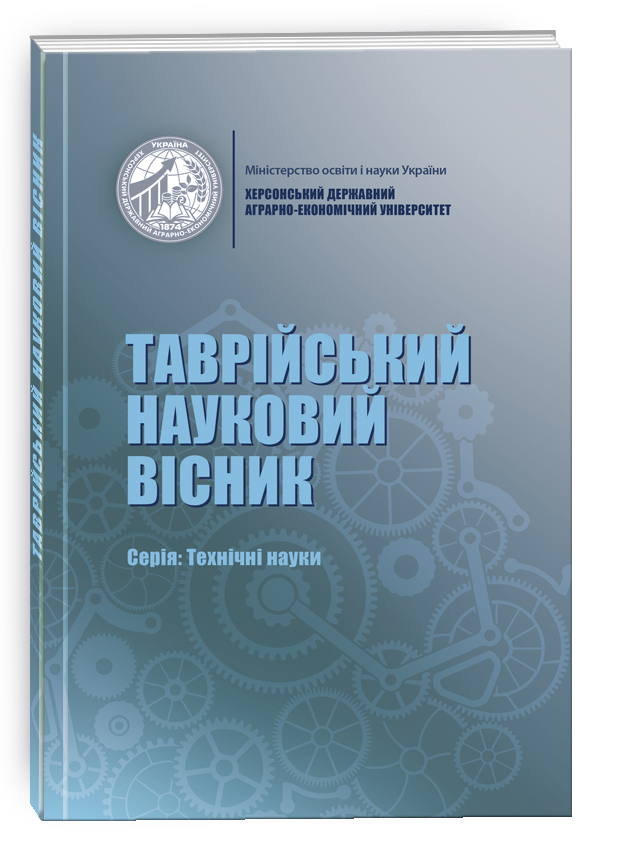RESEARCH OF RESISTANT POTATO STARCH RS3
DOI:
https://doi.org/10.32782/tnv-tech.2024.5.20Keywords:
particles, suspension, starch, resistance, temperature treatmentAbstract
The article is devoted to the study of the impact of the method obtaining resistant potato starch on quality indicators. Resistant starch of the RS3 type is one of promising areas development ingredients for food technologies, and thanks to the properties of this starch, it is slowly digested, which gives it biological advantages as a dietary fiber for the human body. The most common industrial method of its production is heat treatment of starch suspension. A lot of research is dedicated to the temperature treatment of starch itself, the number of heating and cooling cycles. It proven that the application several cycles heating and cooling increases the degree retrogradation starch. At the same time, little attention paid to the study properties, which reveal the prospects of this product for the food industry. The quality of resistant starch obtained by various methods studied temperature treatment starch suspension, temperature treatment starch and two-cycle temperature treatment of starch. According to quality indicators, such as water- and oil-absorbing abilities, swelling and solubility, the sample obtained by temperature treatment starch suspension is the best. Such a sample has better solubility and creates the least turbidity in the solution. Evaluating starch samples oresisted quality, noted, that the temperature treatment of starch contributes to the reduction of turbidity in liquid food systems, and the more the temperature treatment cycles. However, an increase in the level temperature treatment increases the resistance index starch and contributes to the formation smaller bonds "cross-linked" carbohydrate systems, which manifest themselves well during gelatinization. During two-cycle heating, the obtained starch sample has the highest gelling strength. Thus, during two-cycle heating starch, resistant starch the RS3 type obtained, which has good organoleptic and physicochemical properties, and better indicators resistance and jelly strength.
References
Englyst N., Trowell H., Southgate D.A., Cummings J.H. Dietary fiber and resistant starch. The American Journal of Clinical Nutrition. 1987. Vol. 46. Issue 6. P. 873-874.
Haralampu S.G. Resistant starch – a review of the physical properties and biological impact of RS3. Carbohydrate Polymers. 2000, Vol.41. Issue 3. P. 285-292.
Dysseler P., Hoffem D. Estimation of resistant starch intake in Europe. In Proceedings of the Concluding Plenary Meeting of EURESTA. European Flair-Concerted Action № 11 (COST 911), ed. N-G Asp, JMM van Amelsvoort & JGAJ Hautvast. 1997, P. 84–86.
Brighenti F., Casiraghi C., Baggio C. Resistant starch in the Italian diet. Br. J. Nutr. 1998, Vol. 80. P. 333–341.
Ashwar B.A., Gani A., Wani I. A., Shah A., Masoodi F.A., Saxena D.C. Production of resistant starch from rice by dual autoclaving-retrogradation treatment: Invitro digestibility, thermal and structural characterization. Food Hydrocolloids. 2016, Vol. 56. P. 108-117. https://doi.org/10.1016/j.foodhyd.2015.12.004.
Morris V.J. Starch gelation and retrogradation. Trends in Food Science & Technology. 1990, Vol. 1. P. 2–6.
Sun S., Sun Z., Saleh A. S., Zhao K., Ge S., Shen H., Li V. Understanding the granule, block, crystal and molecular structure of normal and waxy A– and B-starch granules of wheat. Food hydrocolloids. 2021, Vol. 121. P. 1070. https://doi.org/10.1016/j.foodhyd.2021.107034
ДСТУ 4380:2005. Крохмаль модифікований. Загальні технічні умови. [чинний від 2005.02.28] – Київ: ДЕРЖСПОЖИВСАНДАРТ УКРАЇНИ. 2006. – 15 с.
Tan H., Watanabe K., Mitsunaga T. Structure and functionality of large, medium and small starch granules in normal and waxy endosperm of barley. Hydrocarbon Polymers. 2002, Vol. 49(2), P. 217–224.
AOAC Official Method 991.43. Total, Soluble, and Insoluble Dietary Fibre in Foods. – 5 с.
Varatharajan V., Hoover R., Li J., Vasanthan T., Nantanga K.K.M., et al. Impact of structural changes due to heat-moisture treatment at different temperatures on the susceptibility of normal and waxy potato starches towards hydrolysis by porcine pancreatic alpha amylase. Food Res. Int. 2011, Vol. 44. P. 2594–2606.
Кузнєцова І. В., Хомічак Л. М., Пазюк В. М., Касамара А. С. Дослідження способу «відпалу» крохмалю в процесі отримання резистентного крохмалю. Тези міжнародної науково-практичної конференції «Інноваційний розвиток харчової індустрії». 27 листопада 2023 року. Інститут продовольчих ресурсів НААН. 2023. C. 69–71. https://drive.google.com/file/d/1elM8WgpQ42ETh7RLIKwg-1hIi64L1qTn/view







